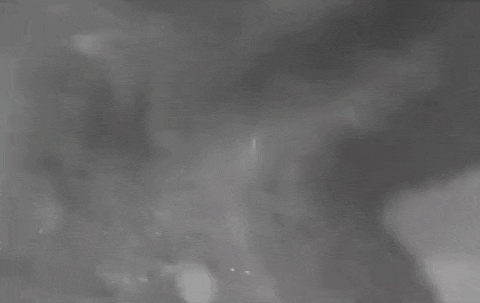
READ MORE: Tech Nostalgia Matters Because it’s the History of Us (Lance Ulanoff)
Hands up, who remembers Kiki Stockhammer? If you do, the chances are you are middle-aged (and let’s spread that from 45 to 70) and you would definitely have been at an NAB Show or an IBC in the mid-90s when Kiki — “Hi, I’m Kiki!” — was in full flow.
She was the unmistakable, charismatic evangelist for the NewTek Toaster, a sort of an all-in-one hardware-based broadcast production system that was a feature of trade shows of that era.
At a time when “traffic stoppers” at such events meant the awkward hiring by exhibitors of (usually) local girls to lure the predominantly male audience into a booth demo, Kiki stood out because she really knew about the product she was promoting.
Riffing on such nostalgia, technology commentator Lance Ulanoff says memories like these are precious to anyone who has lived the majority of their lives growing up and changing with technology.
“It’s why we love tech nostalgia,” he says. “Time and innovation march on, which means we can’t carry these old systems with us. But we can’t forget them, either. We made them and they made us into the digital society we are today.”
He’s not talking broadcast professional gear here, but the fond remembrance of mid-‘80s home PCs, 5.25-inch floppy disks, Apple’s first Macintosh, and cassette tape-based programmable computers like the Commodore 64.
Of course, you never forget your first computer, especially if you are of the age of the birth of the home PC. For me it was playing Asteroids on a BBC Micro, a rudimentary but brilliant space invader-style game comprised of black and white pixels (played back on a super chunky monitor and qwerty keyboard) and a countdown sound that ratcheted up the tension as time ran out.
At the same time — 1986 — the first professional broadcast graphics machines were being used to creating the video overlays, transitions and effects, classically used to produce the Dire Straits music video “Money For Nothing” which was played endlessly on the fledgling music station MTV.
That pro machine was a Paintbox from British brand Quantel, which gave broadcast a quantum leap into the era of digital creative technology.
Artist David Hockney, no less, enthused over Paintbox’s possibilities for “drawing with light on glass” in a richness of color “that not even paint can give.”
A decade earlier, Quantel’s first products were digital time-based correctors sold under the IVC (International Video Corporation) name in the US to compete with the then-dominant Ampex Corporation.
The company’s shift from time-based correctors to framestore image analysis was a breakthrough. Such systems could accept and display live video, while at the same time allowing fast random access from a read/write computer port, a feature which was to become a key technology for future Quantel products.
“Once you have random access you can do anything with it,” Peter Owen, Quantel’s first employee, recalled “You had the ability to make a quarter picture in picture and put a cool border on a live signal.”
READ MORE: Quantel Gave Broadcast a Quantum Leap Into the Era of Digital Creative Technology (IBC365)
During the 1980s and 1990s, Quantel was in its heyday, riding high on the nascent post-production industry it helped catalyze. Its tools like Harry and Henry were must-have items for broadcast graphics and finishing houses on both sides of the Atlantic, with facilities trading on their ownership of one.
It wasn’t the artist that clients paid for, but the brand name of the suite — a Flame, or a Harry then a Henry. They had, too — since facilities were paying close to $100,000 per machine. These tools fundamentally changed the post industry from the mid-1980s by bringing graphics, compositing, image resizing and editing to a pen and tablet workstation.
This was a time of almost fabled extravagance when tools for post dominated headlines at tech trade shows. Digital telecine machines, for example, cost the best part of a million dollars.
These were the days when digital video cameras recording to video tape began to go mainstream and when, as cool as the editing and compositing software was, the focus was all about the hardware. Massive machines from Silicon Graphics (SGI) or Sun Microsystems powered edit and graphics suites. Quantel built its own computers and main rival Discreet Logic offered turnkey packages powered by SGI.
“We’re also, let’s face it, lamenting the change to broadcast engineering. The industry is moving slowly but fundamentally from the tried-and-true SDI architecture with expensive, standalone video and audio routing switchers, production switchers, control-room switchers and all of the workflow island technology needed to maintain operations in a familiar way. It is moving to the virtual equivalent of most all of these devices running as software defined, virtualized infrastructure — perhaps in a public cloud hyperscaler.”
You can now find models of this hardware in museums. The Science Museum in London exhibits a SGI tower only a few yards away from one of Charles Babbage’s Difference Engines from the 1820s.
It’s no coincidence that Paul Kellar, Quantel’s research director during its hey day, likens the firm’s formation to the code breakers of the Enigma machine during World War II.
“Both were capable of lateral thinking, using imagination to find new ways of doing things,” Kellar has said. Since departing the firm in 2006 he has devoted much of his time with teams at Bletchley Park helping to reconstruct an operational replica of the famous code-breaking machine Turing Welchman Bombe.
Younger generations are nostalgic too. Ulanoff notes that millennials “wax rhapsodic over AIM, Myspace, and their Nokia and Sidekick phones,” while “Gen Xers corner you to tell tales of their first bulky Toshiba laptop and the stack of useless 3.5-inch floppies they still have stored in a desk.”
Quantel has now ceased to exist as a brand, failing to evolve quickly enough to the desktop. Discreet products have been part of software vendor Autodesk since 2005. NewTek’s Toaster, then its Tricaster successor, heralded the end of the Quantel and Discreet super hardware-based era because it combined many of same functions into a far cheaper computer package. NewTek is now part of software-only company Vizrt, with production switching available in the cloud.
Perhaps the real reason for nostalgia is the permanency and tactility of 1980s-2000 gear — equipment that kickstarted the broadcast and post-production industry that we know today.
It is much harder to form attachments to software and GUIs and even harder to really love something or even value equipment that is powered by a data center miles away or accessed by browser from the cloud, when new versions can be updated, spun up or cancelled in an instant.
We’re also, let’s face it, lamenting the changes in broadcast engineering. The industry is moving slowly but fundamentally from the tried-and-true SDI architecture with expensive, standalone video and audio routing switchers, production switchers, control-room switchers and all of the workflow island technology needed to maintain operations in a familiar way.
It is moving to the virtual equivalent of most all of these devices running as software defined, virtualized infrastructure — perhaps in a public cloud hyperscaler.
IT may be all about computers but there is something retro, analog and vinyl even about the early digital era which is now being phased out.


